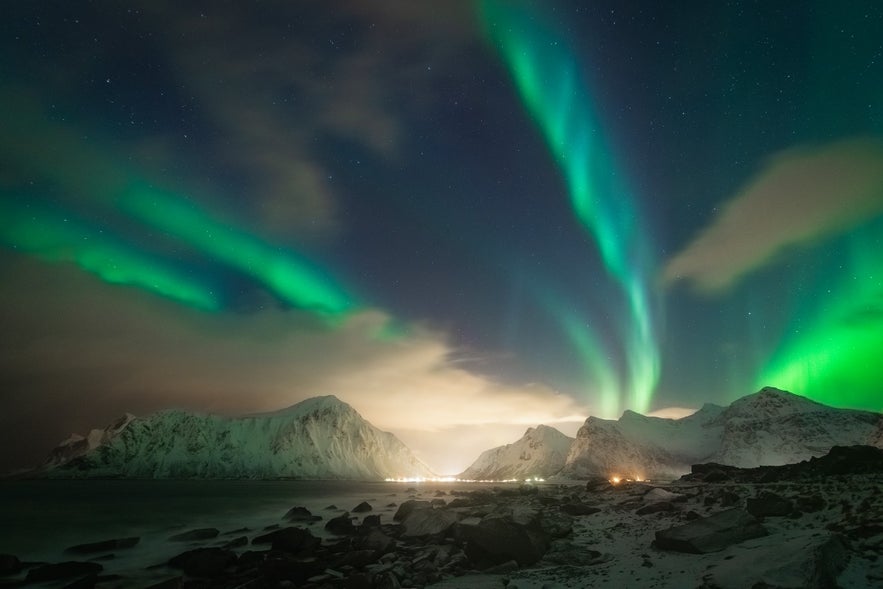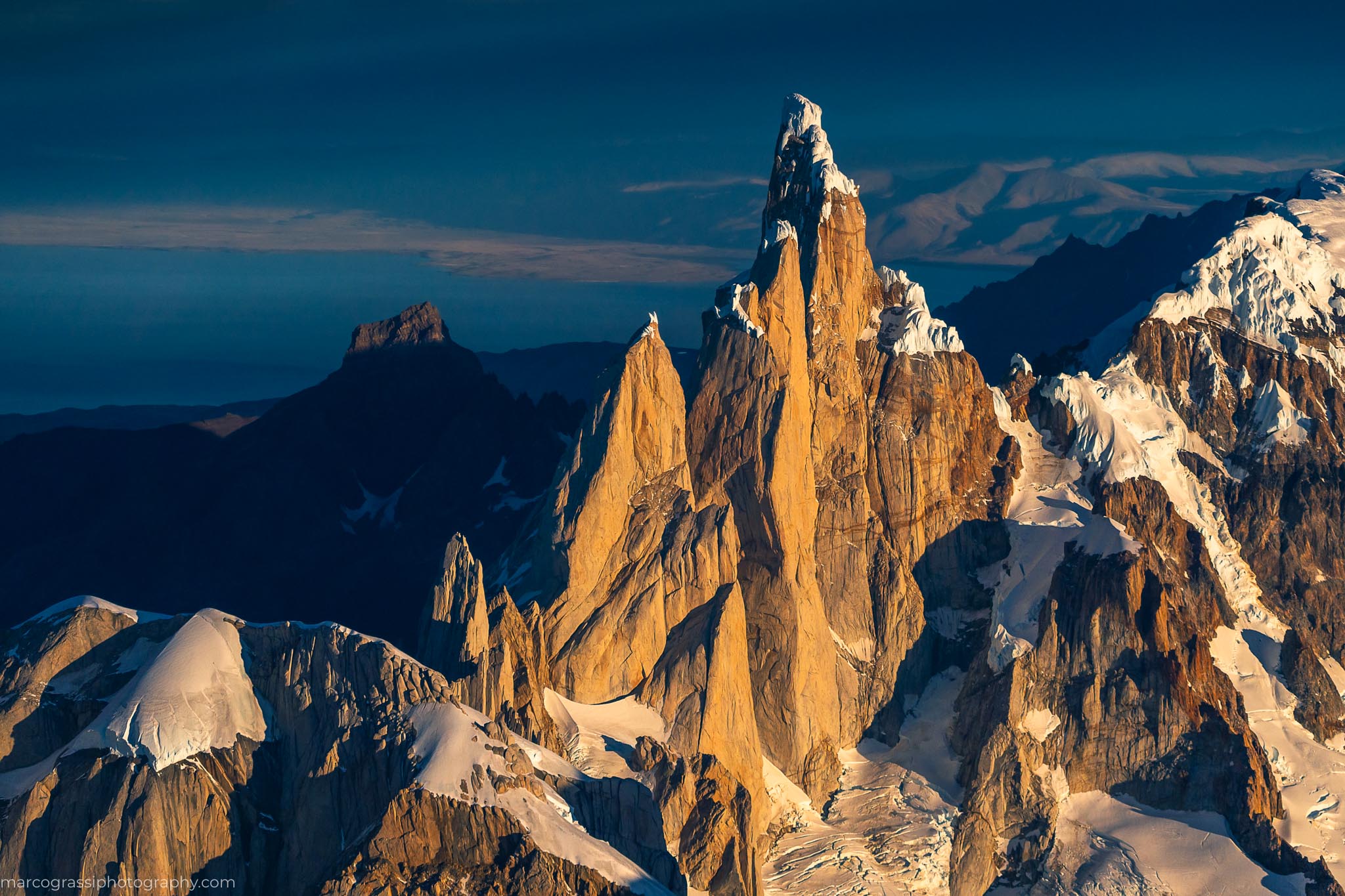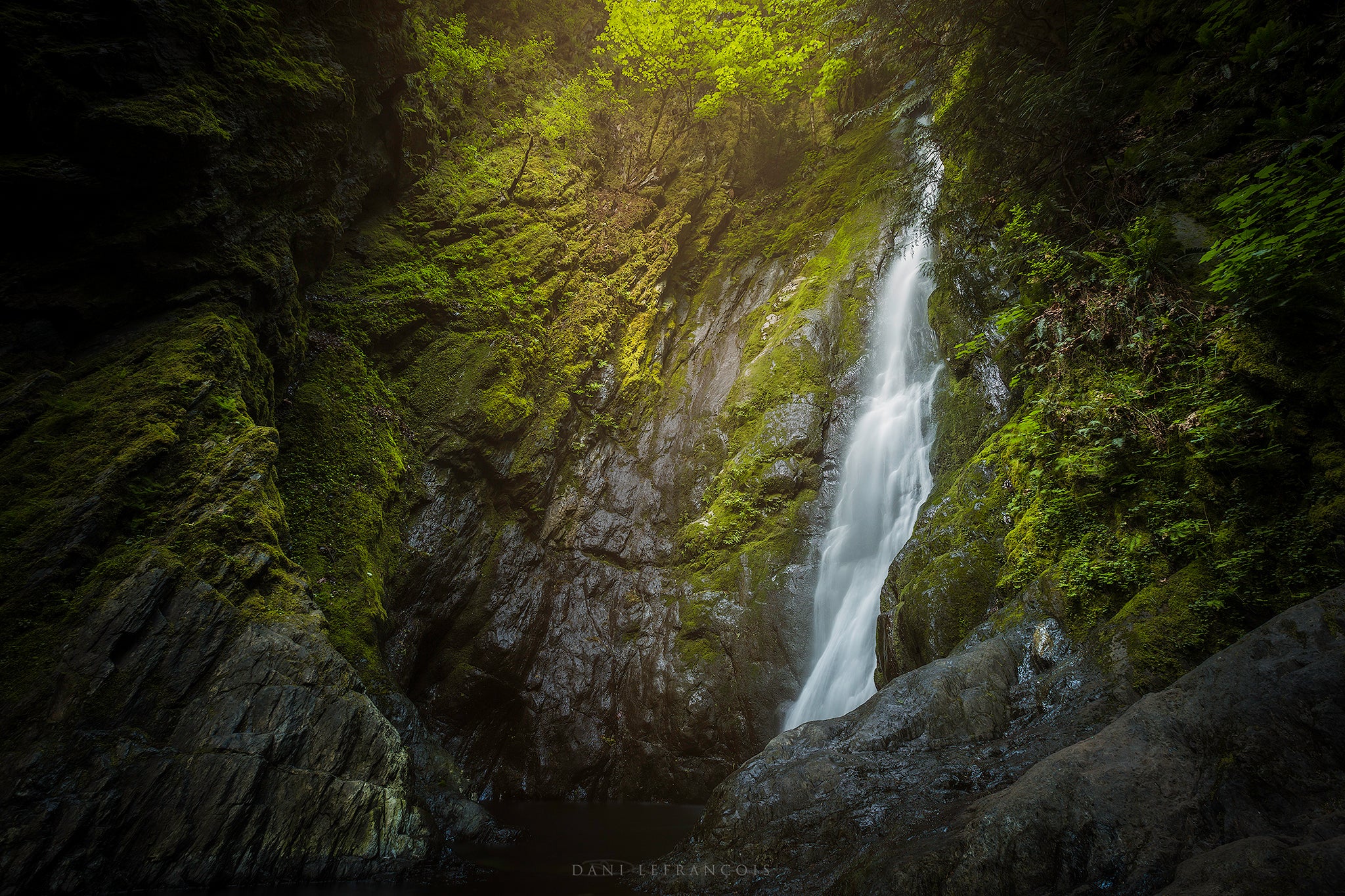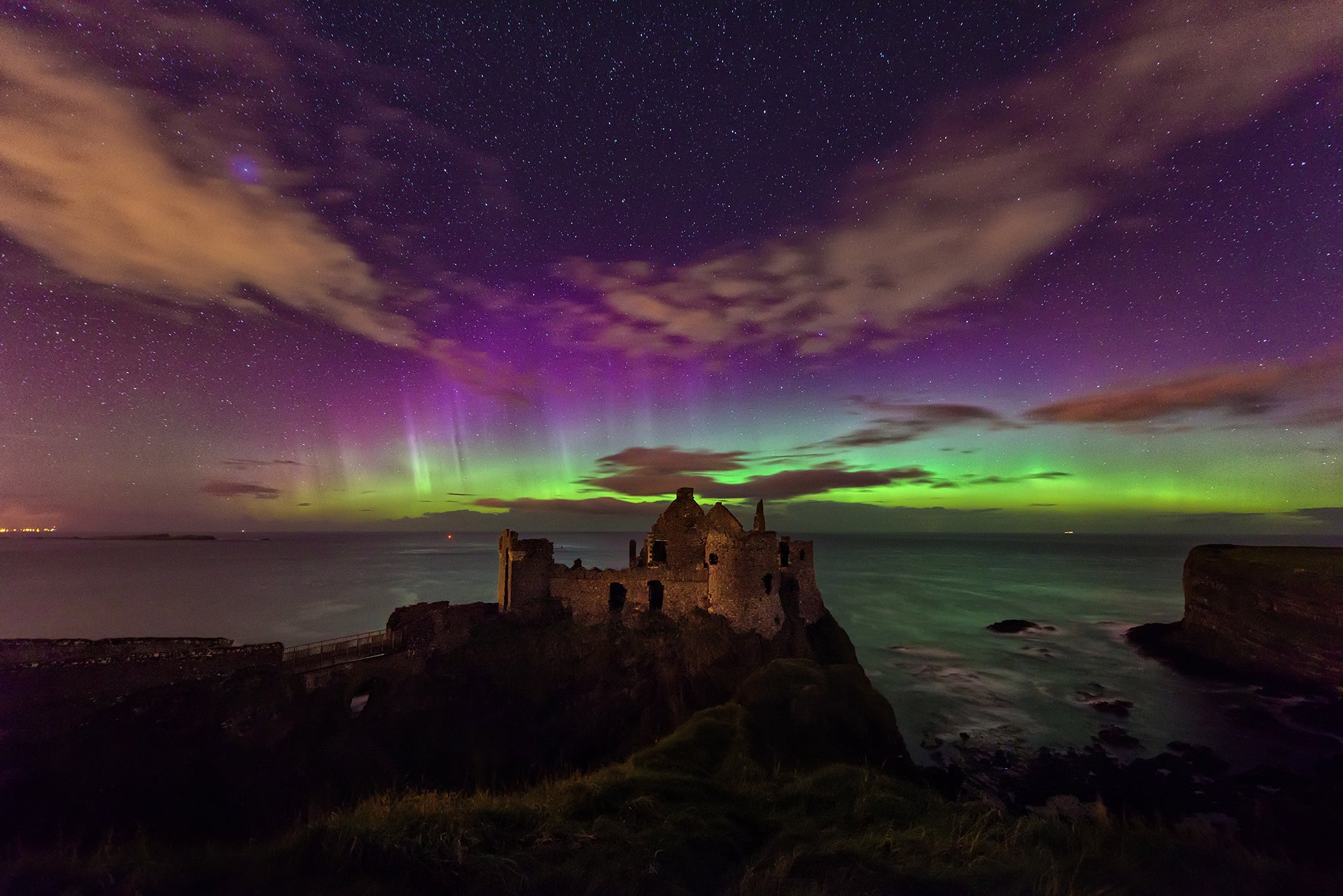
You may have heard of him or seen his photos before. Mike Mezeul II is an award-winning adventure photographer from the USA whose images portray the awe-inspiring side of nature, encapsulating it in all of its wild and rugged beauty.
With a lifetime of experience and a slew of well-known clients, brands and publications under his belt, this well-travelled soul is no stranger to the business of photography. This month, we had the pleasure of chatting with Mike about how he got his start taking pictures, what makes a good photograph, his work with severe weather photography and his thoughts on where the art form is headed in the future.
- Check out these USA Photo Workshops
- Explore these articles on Landscape and Nature Photography
- Discover How to Become a Professional Landscape Photographer
Hello Mike! Thanks for joining us. Can you start by telling us a little bit about yourself? How did you get your start in photography?
Sure thing! I got started in photography by accident. When I was 15 years old, I received a 1975 Yashica MG-1 camera for my birthday. I had absolutely zero interest in photography, really, I never even cared about cameras or anything. But, when my father explained to me that the camera was his from the Air Force, and he had no idea how to use it, the competitiveness in me kicked in and I knew I had to learn it.
I didn’t have a car, so I took photos of whatever I could around my parents front yard and pond across the street. I carried a small yellow notepad with me and took notes on each frame's settings and the lighting conditions. From there, I saved up my allowance to get the film developed. I would compare my notes to what was developed and try to learn off that. I would also find myself checking out books all the time from the library to try and learn.
What were some of the real turning points in your career?
I had a couple of images go viral in 2015-2017 and those images really opened up a door to becoming an educator and growing a social media following. Those images were of the lunar eclipse transitions and another was of the Milky Way over a lava flow from the Kilauea Volcano.
Another big turning point was getting asked to come speak on behalf of Nikon back in 2017 at the CES Convention in Las Vegas. The networking that came from that only continued to open more doors.
Which photographers have influenced you over time? How did they influence your thinking, photography and ultimately your career path?
I have had two huge photographer idols over the years, Jim Reed and Paul Nicklen. Jim is a fellow storm photographer and I can remember seeing his images appear in magazines and just being in awe. This was before social media, so seeing someone venture out in front of severe weather and capture these captivating images was so unique. Even these days, one of the things I love most about Jim’s work is that it’s not over processed or manipulated. His images speak truth and that’s something I’ve always wanted to have translated through my work as well.
Paul’s work, I mean what can I say? It’s incredible, every frame. I love how he just puts so much incredible effort into capturing an image and telling a story. The awareness that he has created for our environment is priceless. And let’s just say, anyone willing to jump into the icy waters with a leopard seal and capture the crazy images in which he did, I want to create that kind of imagery.
Do you prefer to photograph close to home or do you find faraway places more exciting? Are there any special places that inspire you the most to create new work?
I absolutely love to travel. This world is so big, and full of so many incredible stories, landscapes and people that I want to capture as much of it as I can during my time here.
Living in Texas has its benefits when it comes to storm photography, as we live in one of the most active regions of the world for that, but when it comes to landscapes, we don’t have too much.
I love getting out and seeing beautiful mountains, glaciers, fjords, deserts, and more. I love it all to say the least. I don’t have a special place per se that inspires me, but I do love volcanoes and I think if I could be anywhere in the world to shoot, it’d be somewhere on a volcano.
 Lava flow. Photo by: 'Mike Mezeul II'.
Lava flow. Photo by: 'Mike Mezeul II'.
Are there any particular places that you have had to get to know better, before being able to capture them?
I think in order to successfully capture an image of any place, you need to spend some time there getting to know it. Sure, you can show up to the iconic locations you see all over social media, but there is so much more to those locations then what is shot over-and-over again.
I typically don’t feel comfortable in a place until I’ve spent about 40 hours or so in that area hiking, scouting, and understanding the environment. This includes the light, the weather, and more. There have been so many places and so many times that I thought I had a great composition pretty quickly, but then took another hour to explore and found something even better.
Scouting is so incredibly key in landscape photography. With storm photography, you kind of have to take what you can get because you can’t really move the storm, haha.
 Valley of fire. Photo by: 'Mike Mezeul II'.
Valley of fire. Photo by: 'Mike Mezeul II'.
- See also: Ultimate Guide to Desert Photography
You have a diverse portfolio of images, spanning across many different genres from aviation to cityscape, wildlife, landscape, sports and wedding photography. In the beginning, what was the goal behind your work and how have you combined the different approaches with the style that you have today?
I always tell people that I love to photograph everything and anything I can put in front of my lens, and that was no different back when I started photography.
When I was learning how to shoot, I never said no to any opportunity, so my subject matter was all of the place. To this day, I still love to create images of most subjects. I have found a few along the way that may not necessarily be for me, babies being one of them. I think and preach that in order to be successful in this industry these days, you have to be versatile. Sure, you can absolutely make a career by honing in on just one subject matter, but the pressure can be eased a bit if you are able to shoot multiple subjects well.
For instance, when I’m not on the road traveling and shooting landscapes, I photograph a lot of marketing and commercial imagery for the Dallas-Fort Worth area. By being able to photograph different subject matters, it can often make combining the two together for a shoot quite fun. An example is some of the portrait work that I’ve combined with my severe weather imagery.
 Beauty and the beast. Photo by: 'Mike Mezeul II'.
Beauty and the beast. Photo by: 'Mike Mezeul II'.
- See also: Interview with Viktoria Haack
In your opinion, what makes a good photograph? How do you ensure that you’ll be able to capture the best shot?
In my opinion, a good photograph is one that tells a story. It’s an image that captivates an audience, stirs emotion, and makes the viewer feel as if they are standing there behind the lens as well. It’s an image in which you can tell that there was purpose behind every detail within the frame.
I often tell my students that one distracting or negative element in an image can completely ruin a scene, so take the time to capture something as perfect as possible. Wait for the light. Scout for the best composition. Be patient for the conditions to come together.
I am not a big fan of photographs now that are swarming social media that involve skies being replaced, mountains warped, and landscapes combined. When I started in film, none of that was possible. You knew an image was true to the moment and that the photographer waited and put in the work and effort to capture that frame. I keep that mentality while I’m out there shooting. Quality over quantity. I’d much rather capture one stellar image that involved waiting and failure after failure, than ten images in which I need to manipulate to heck in post to make something from.
 Firefall. Photo by: 'Mike Mezeul II'.
Firefall. Photo by: 'Mike Mezeul II'.
- See also: 25 Tips for Creative Beach Photography
What do you want to achieve with your photography? Of your images, which one would you say best exemplifies that goal as a whole? How does it do that?
Personally, I want to capture that awe-inspiring moment that tells a story of what this world is truly capable of. Not what my mind or Photoshop is capable of, that’s not photography, that’s digital art. I want to inspire people to get out and explore this world through transparency in my work.
One of my favourite images that exemplifies this is my image from the Kilauea Volcano in Hawaii with the lava, Milky Way, iridium flare, moon, Mars and Venus all in one image. It was not Photoshopped, not composited or manipulated in any way, it happened and it happened only because of hard work and patience. It involved hiking nearly 13 miles up the volcano, visualising an image before even setting up the camera, overcoming obstacles (heat from the lava and lens flaring), and timing with the night sky alignment and spacing of the Milky Way and moon.
 Lava and the Milky Way. Photo by: 'Mike Mezeul II'.
Lava and the Milky Way. Photo by: 'Mike Mezeul II'.
What challenges you most these days with shooting? From the world of photography, what keeps you motivated or inspired?
I won’t lie, I put a lot of pressure on myself to capture something amazing. I hate missing out on great scenes, especially with severe weather and volcanoes. Don’t get me wrong, I’m incredibly happy for any photographer who captures a great image, but inside I cry a bit!
During times when I’m feeling challenged, I tend to take social media breaks and just break away from the surplus of images that are thrown in front of our eyes daily. This allows me to kind of get back to my roots, find my creativity again, and remember why I love photography.
For inspiration, I like to do small projects for myself and then eventually put them on social media. This allows me to just shoot for me and not worry about what I’m missing out on. It takes a bit of self control at the beginning because you just want to see what everyone else is doing, but once you get focused, it’s a nice breath of fresh air.
 Aurora in Banff. Photo by: 'Mike Mezeul II'.
Aurora in Banff. Photo by: 'Mike Mezeul II'.
- See also: Guide to the Aurora Forecast in Iceland
What made you decide to become a photography workshop instructor? What have you learnt from teaching others?
It’s pretty cool actually because I never planned on becoming a photographer instructor, I more so or less fell into it. After a couple of my images went viral, I started receiving messages from people asking if I taught. The very thought of teaching scared me so much because back then, I struggled pretty badly with social anxiety and just talking to people in general, so I said no to a handful of people before having a moment of strength and taking on my first class.
I’ll never forget how scared I was when I had ten people standing in front of me for a night photography class, waiting for me to tell them what to do. I actually took a minute to “go get something from the car,” where I sat in the car for a minute to collect myself and calm my nerves. The rest of the night went as perfect and fun as it could have and I immediately had people asking for more.
From that day forward, I discovered a new passion for teaching and I’ve loved every minute of it since. It’s such a fantastic feeling to get to teach others how to do something I love so dearly. Whether that’s educating them on the technical and compositional side of things or helping them capture that “dream shot”, I wouldn’t trade what I do for anything.
It’s funny too because I teach my students, but they also teach me so much as well. That’s the cool thing about photography, we all see this world so differently. I’ve had students come up to me in places that I’ve shot dozens of times and show me their composition and make me go, “Wow, I never thought about that angle.” Teaching is also a fresh reminder to have fun. I try my best to always have fun, but sometimes the pressure can get the best of me, so my students are a great reminder of why I do this.
 Bamboo grove. Photo by: 'Mike Mezeul II'.
Bamboo grove. Photo by: 'Mike Mezeul II'.
- See also: Japan Photography Workshop in Autumn
Tell us a bit about your photography workshops in Tornado Alley. Who are these workshops targeted at and what can people hope to achieve by joining one of these tours? Can people participate if they’ve never had any storm-chasing experience?
My Tornado Alley Photo Tours are targeted towards photographers who have a love for the sky and may have always wanted to see a supercell thunderstorm or tornado. These are tours where I take 2-3 participants out at a time during the peak of severe weather season in hopes of capturing natures most powerful storms. It’s not all about the tornado, in fact, that’s just the icing on the cake. It’s about documenting beautiful storms, optical phenomenon like rainbows and anti-crepescular rays, lightning, mammatus clouds and more.
These tours are open to any photographer who would like to visit Tornado Alley with someone who has 20 years documenting storms. There is a lot that can go wrong out there if you don’t have the knowledge and experience of these storms, so I encourage people to go with someone who knows the atmosphere.
 Storm over New Mexico. Photo by: 'Mike Mezeul II'.
Storm over New Mexico. Photo by: 'Mike Mezeul II'.
- See also: How to Take Great Photos in Bad Weather
Aside from workshops, how else do you make an income with photography? What advice do you have for photographers who are trying to get their work seen and to establish a portfolio? Is there something in particular that is paramount to running a successful photography business?
When I’m not leading a workshop, I do a lot of commercial work back here in Dallas, as well as multiple speaking engagements across the U.S. each year. For any photographer trying to get their work seen, it takes perseverance. You will get shot down or not hear a response quite a bit, but keep going. All it takes is one small door to open and before you know it, you have a snowball effect going with bigger and bigger doors opening.
The truth though is that this takes time. The biggest tip I can give is to never take no for an answer, if I did that, I’d be in a cubicle, working for someone else, doing something I hated.
 Supercell. Photo by: 'Mike Mezeul II'.
Supercell. Photo by: 'Mike Mezeul II'.
What is your take on the issue of nature photography ethics?
I truly believe that we need to do better. Landscape photography has grown exponentially in the past ten years and with that comes more foot traffic to these beautiful locations. I’ve seen so many photographers, and even instructors, destroy the landscape by trampling vegetation, breaking off tree limbs, throwing trash on the ground and more.
This is, pardon my language, but it’s bullshit. We travel hundreds of miles to photograph a location because of its beauty, then we trash it? I have no problem publicly calling out photographers who act disrespectfully. I just don’t get it. We have to do better at following the principles of leaving no trace.
 Pele eye. Photo by: 'Mike Mezeul II'.
Pele eye. Photo by: 'Mike Mezeul II'.
What are your thoughts on the future of professional photography?
I think the future of professional photography is going to be an exciting but challenging one. With the new technological advances in digital cameras, lenses and drones, the creative opportunities are only going to continue to expand. On the other hand, as cameras get better, the potential to be a “professional” photographer is becoming a bit easier and more accessible, thus saturating the industry more and more.
In order to succeed in this career path, I believe you are going to have to continue to wear multiple hats and shoot more than just one subject matter. Networking and who you know is going to be so key as well. I’m excited for the creativity that is coming but also the challenge of standing out.
 Becoming a professional photographer involves shooting more than just one subject matter. Photo by: 'Mike Mezeul II'.
Becoming a professional photographer involves shooting more than just one subject matter. Photo by: 'Mike Mezeul II'.
Finally, can you share with us a bit about the projects that you’re working on in 2020? Is there anything exciting that we can expect to come from you in the not too distant future?
2020 is going to be incredibly exciting. There are several trips scheduled including Antarctica, but I can’t talk too much about the others right now ;) Some active volcanoes and underwater photography is about as much as I can tease!
For more information on Mike Mezeul II's work, you can visit his website or find him on Instagram and Facebook.
Learn how to photograph the landscape like a pro! Check out our range of international photo tours and photography workshops.












